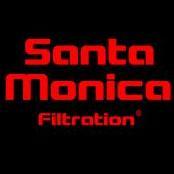Mega Powerful Nitrate and Phosphate Remover - DIY!
-
Topics
-
Latest Update
-
0
〖国外毕业证书〗加拿大阿萨巴斯卡大学毕业证成绩单〖Q/微信751558146〗办理文凭教育部学历学位认证Athabasca University
〖国外毕业证书〗加拿大阿萨巴斯卡大学毕业证成绩单〖Q/微信751558146〗办理文凭教育部学历学位认证Athabasca University 〖国外毕业证书〗加拿大阿萨巴斯卡大学毕业证成绩单〖Q/微信751558146〗办理文凭教育部学历学位认证Athabasca University 〖国外毕业证书〗加拿大阿萨巴斯卡大学毕业证成绩单〖Q/微信751558146〗办理文凭教育部学历学位认证Athabasca University 【实体公司】QQ/微信751558146办理毕业证,成绩单,教育部学历学位认证,使馆认证,归国人员证明,修改成绩单+信封申请学校,offer录取通知书,在读证明,普利茅斯大学学位证书,Plymouth毕业文凭。 ★★主营项目: ◆办理真实使馆公证(即留学回国人员证明,免费申请货后付款,不成功不收费!!!) ◆办理教育部国外学历学位认证。(网上可查、永久存档、快速稳妥,回国发展,考公务员,落户,进国企,外企,创业,无忧愁) ◆办理各国各大学文凭(世界名校一对一专业服务,可全程监控跟踪进度) ◆提供整套申请学校材料 ◆可以提供钢印、水印、烫金、激光防伪、凹凸版、最新版的普利茅斯大学毕业证、百分之百让您绝对满意、设计,印刷,DHL快递;毕业证、成绩单7个工作日,真实大使馆教育部认证2个月。 【真实可查】---【永久存档】---【安全可靠】---【值得信赖】 八年从业经验,专业指导,私人定制,倾心为您解决留学毕业回国各种疑难问题 <1>教育部学历学位认证服务: 做到真实永久存档,网上轻易可查,绝对对客户的资料进行保密,登录核实后再付款。 <2>为什么您的学位需要在国内进一步认证? 二:留信认证的作用 1:该专业认证可证明留学生真实留学身份。 2:同时对留学生所学专业等级给予评定。 3:国家专业人才认证中心颁发入库证书 4:这个入网证书并且可以归档到地方 5:凡是获得留信网入网的信息将会逐步更新到个人身份内,将在公安部网内查询个人身份证信息后,同步读取人 才网入库信息。 6:个人职称评审加20分。 7:个人信誉贷款加10分。 8:在国家人才网主办的全国网络招聘大会中纳入资料,供国家500强等高端企业选择人才。 -
0
WTS/T Lumi GSP and Clove Colony
Tree type lumi GSP and Green & Golden Clove -
1
-
1
Chaeto to Give Away - Postal Code 391030
Chaeto to give away... Will throw by 24 Nov 2000hrs. -
0
Clearing Space - Selling RBTA
Clearing RBTA to reduce bio load. $4 per piece. Self-collect only at 30 Cassia Crescent
-






Recommended Posts
Join the conversation
You can post now and register later. If you have an account, sign in now to post with your account.